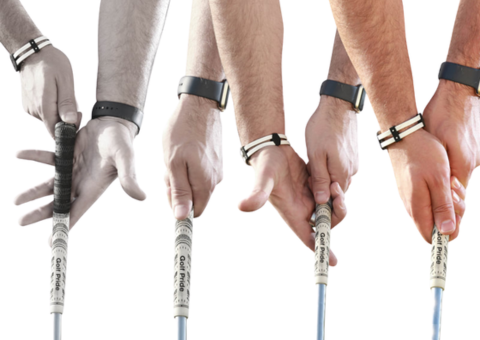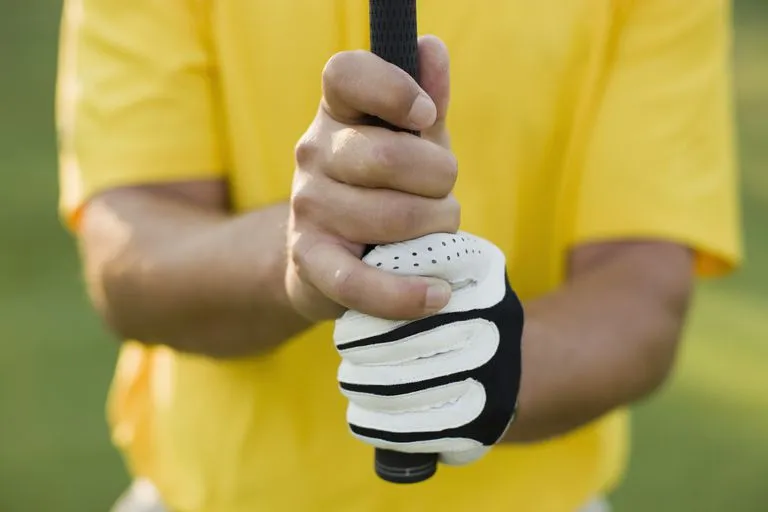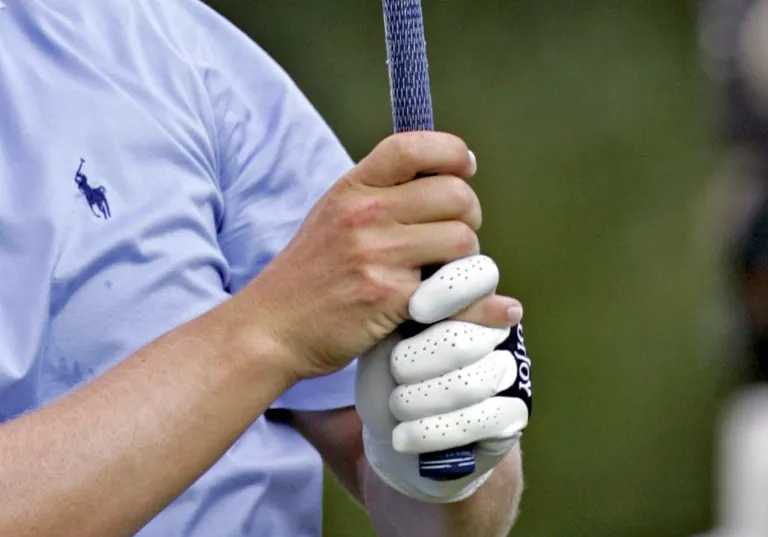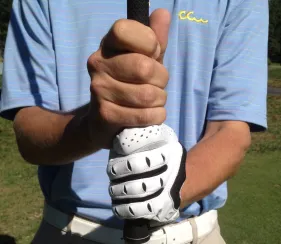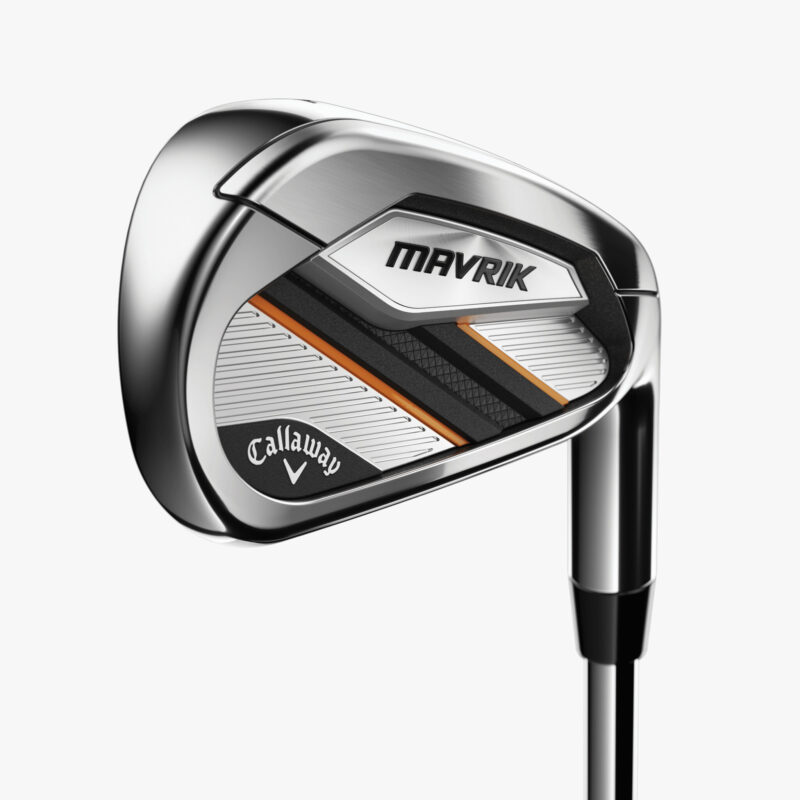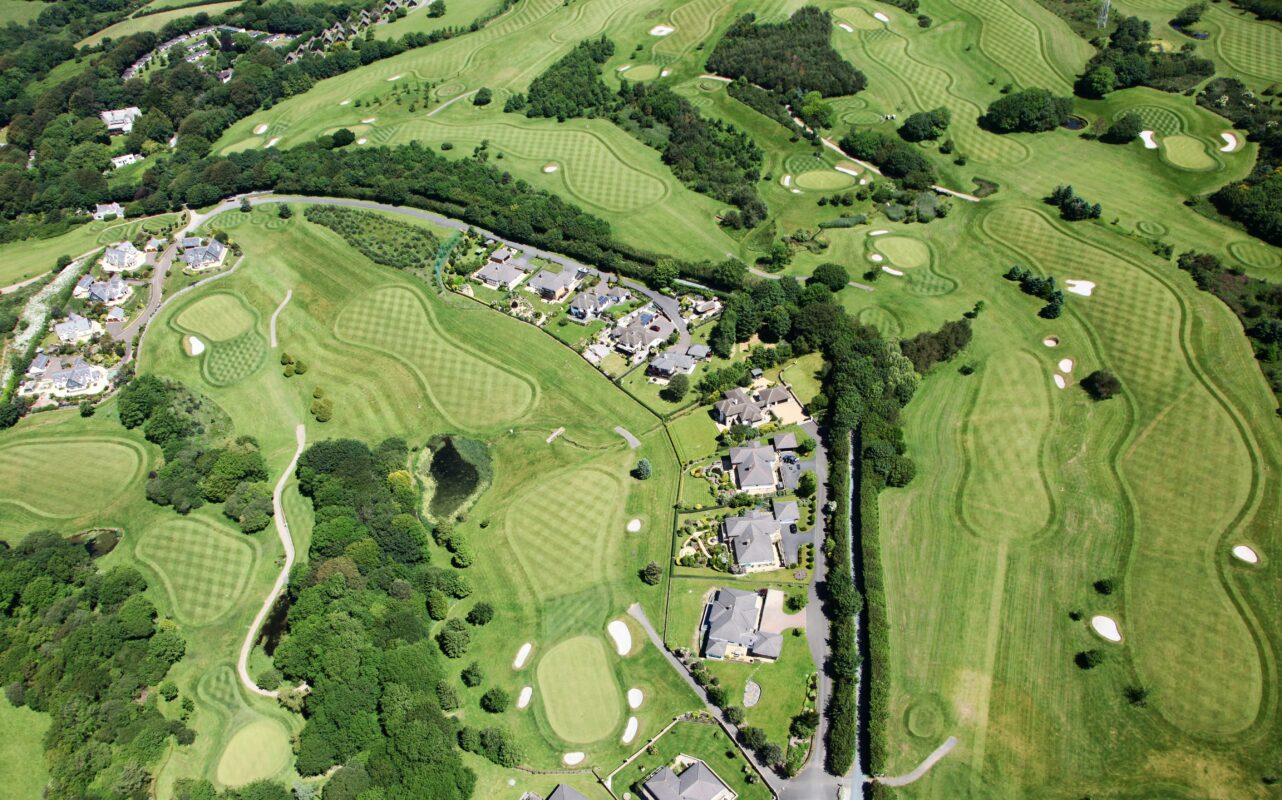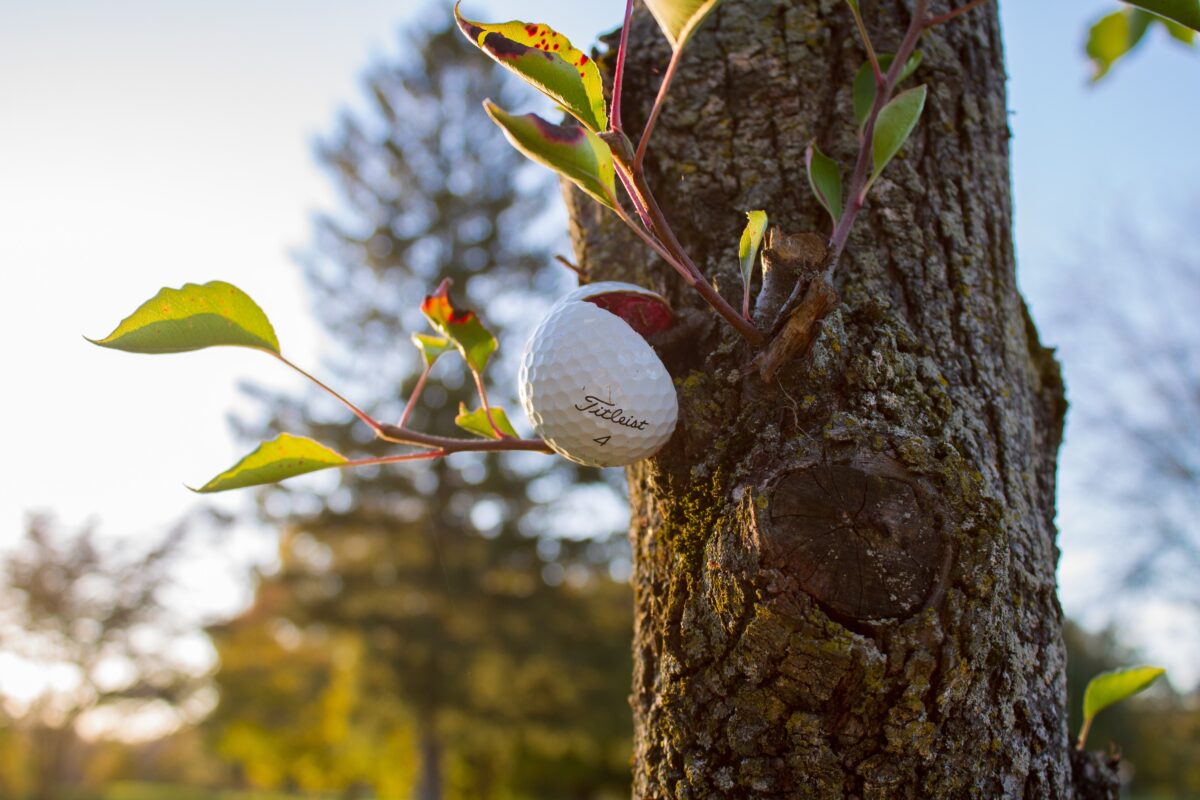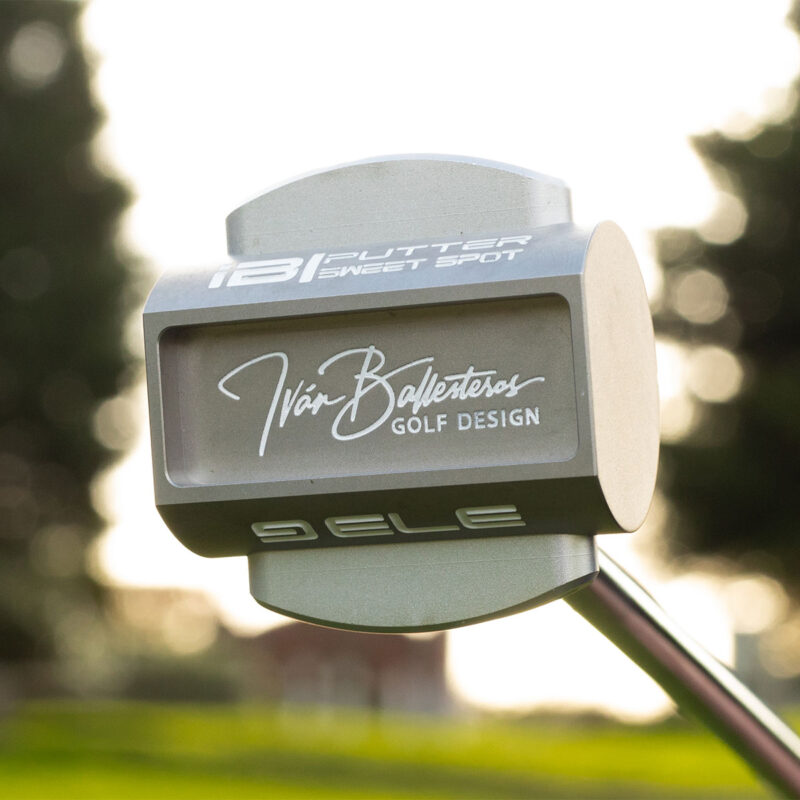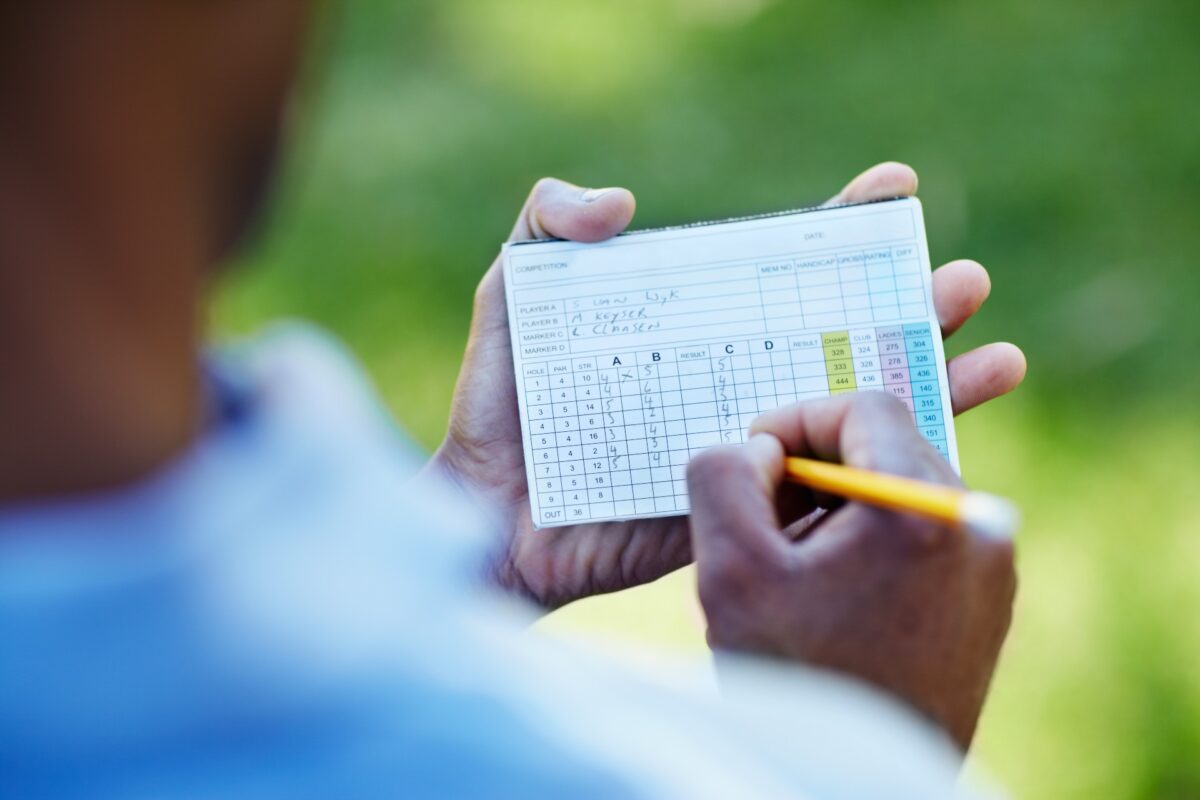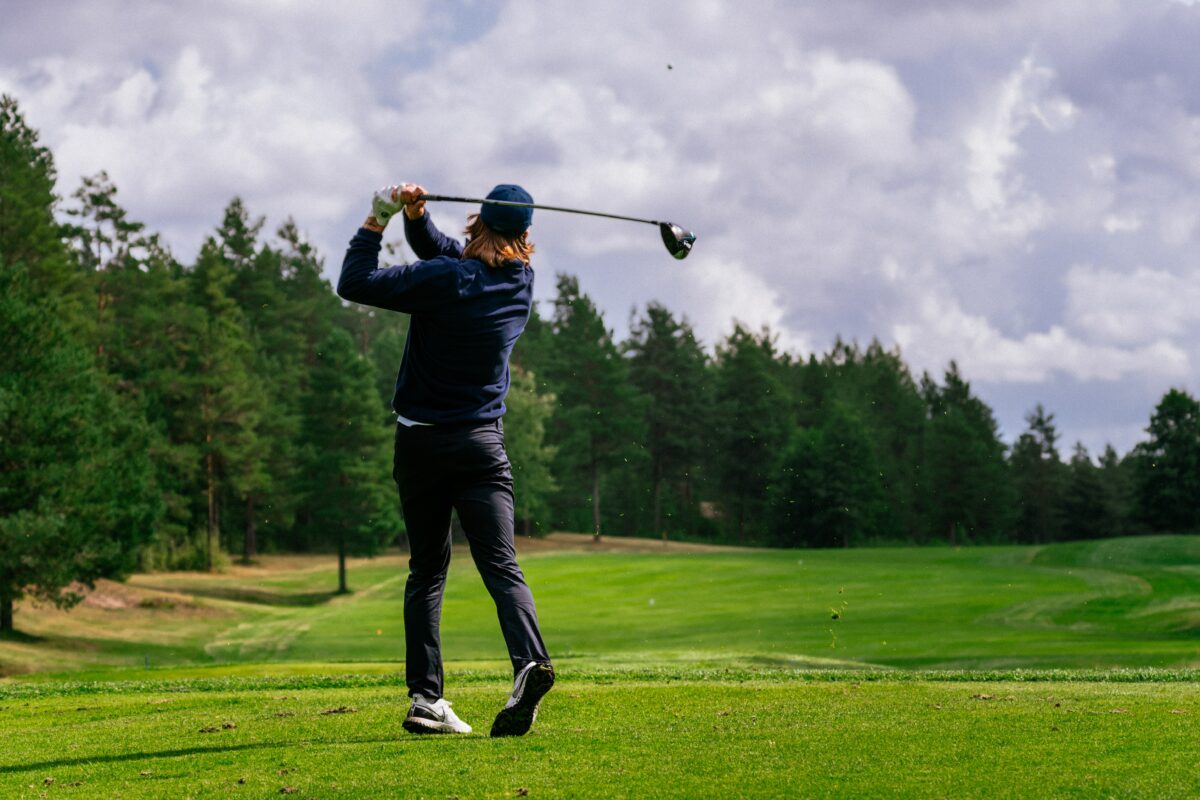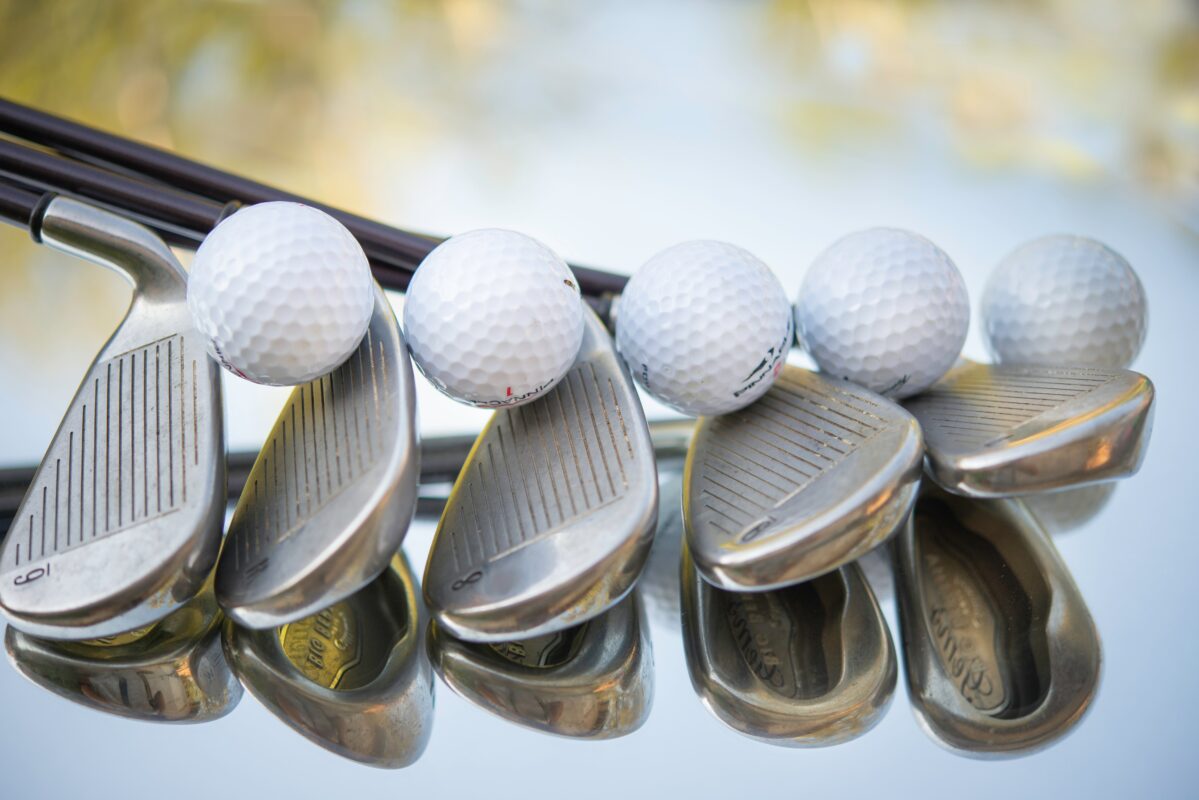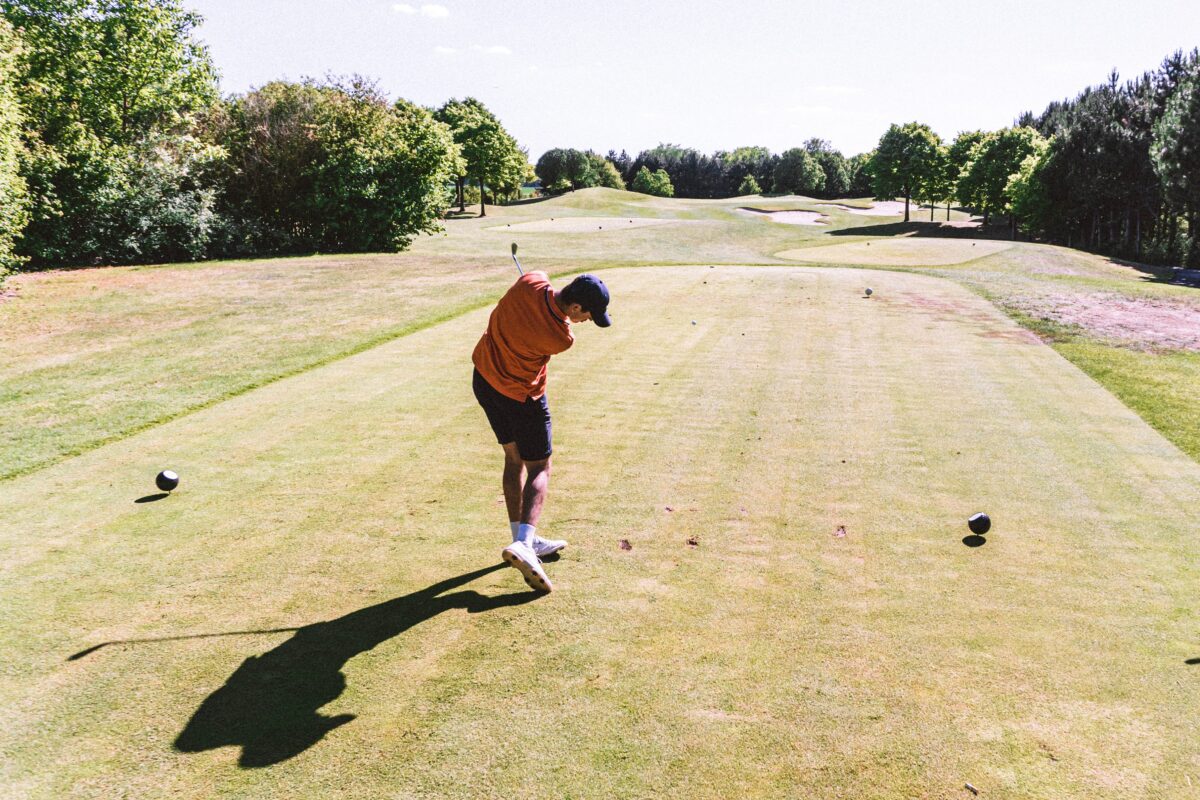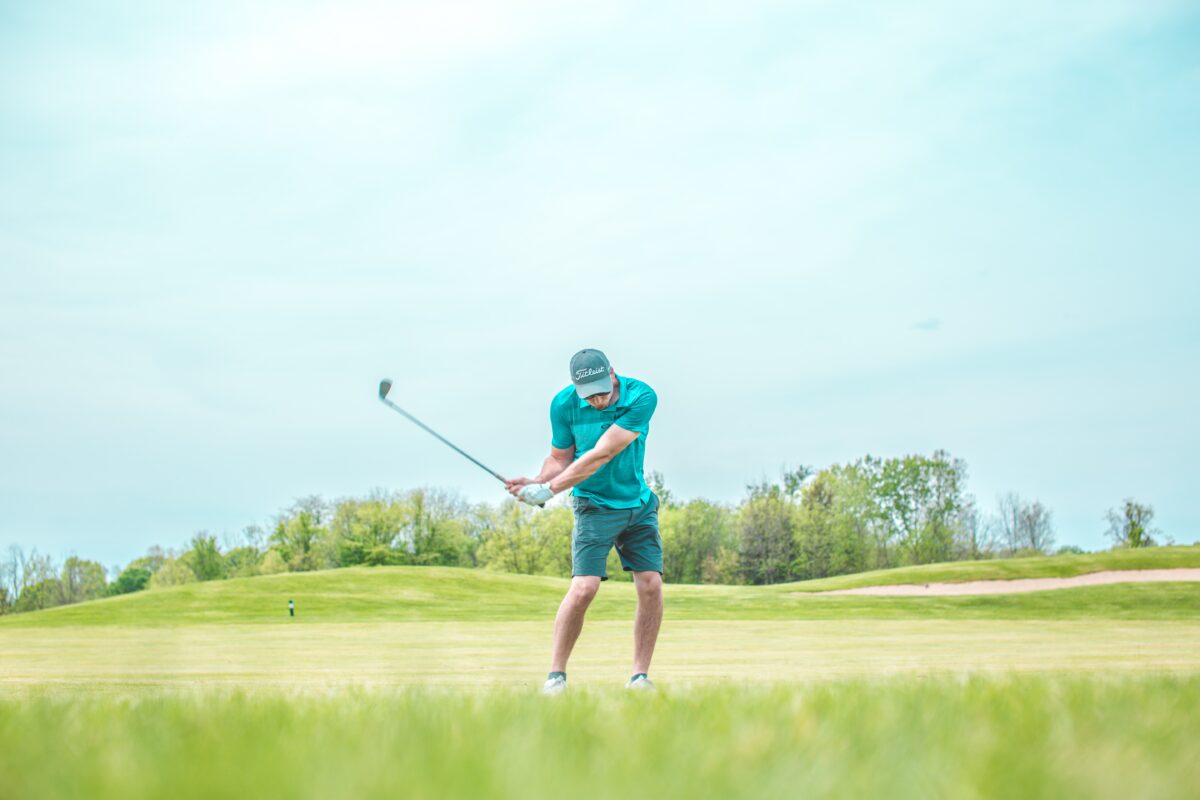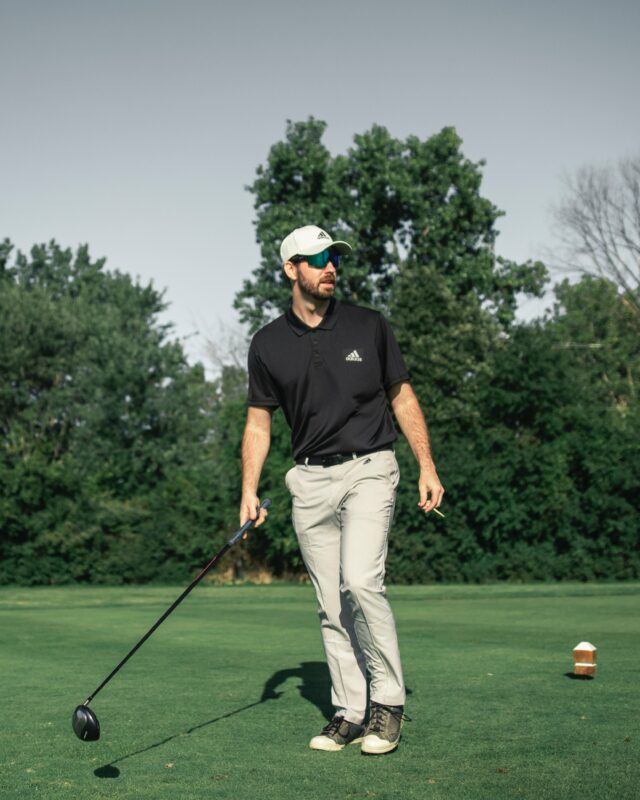The Importance of a Proper Golf Grip: Elevate Your Game with this golf grip guide and hold better your golf club.

Introduction
A proper golf grip is fundamental to your success on the course. Golfers often wonder, about the best way to grip the golfclub for consistency. It acts as the primary connection between you and your club, influencing every shot’s outcome. The importance of a proper golf grip cannot be overstated; it directly impacts your control, power, and precision.
This article will provide valuable insights and techniques to help you improve your golf grip. From understanding its role in the swing process to exploring various gripping styles, you’ll discover how mastering this essential skill can significantly elevate your game.
Understanding the Golf Grip
Grasping the fundamentals of a golf grip is essential for any golfer aiming to enhance their game. This section delves into the definition and role of a golf grip, its significance in hand positioning, and provides a step-by-step guide to mastering the technique.
Definition and Role of a Golf Grip
The golf grip serves as the primary connection between the player and the club. It directly influences how effectively power is transferred from your body to the ball during a swing. A proper grip ensures:
- Control: Maintains stability and precision in your shots.
- Power: Allows for efficient energy transfer, maximizing shot distance.
- Consistency: Helps achieve uniformity in swing mechanics.
Importance of Hand Positioning for a proper golf grip
Hand positioning on the club determines how well you can manage control and power. The correct placement enhances:
- Clubface Control: Ensures that the clubface remains square at impact.
- Swing Path: Guides the trajectory of your shot by influencing wrist action.
How to Hold a Golf Club Correctly
A precise grip starts with understanding key elements such as finger placement and thumb orientation. Follow these steps to hold your club correctly:
1.Left Hand Placement (for right-handed golfers):
- Hold the club at an angle across your fingers, not your palm.
- Wrap your fingers around the handle.
- Place your thumb straight down along the shaft.
2.Right Hand Placement:
- Position your right hand below your left hand.
- Ensure that the handle sits across your fingers.
- Wrap your right palm over your left thumb without causing tension.
- Finger Placement: Your last three fingers on the left hand should firmly grip the club.
- The right hand’s two middle fingers should apply moderate pressure.
- Thumb Orientation: Align both thumbs slightly to the right side of the shaft for a neutral grip.
- Grip Pressure: Aim for a light yet firm hold on the grip of the club, akin to holding a tube of toothpaste without squeezing it out.
Mastering these basics can set you on a path towards improved performance, ensuring every shot you take is controlled and powerful.
Types of Golf Grips
Understanding the various types of golf grips is essential for any golfer looking to refine their technique and boost performance on the course. Here are the three main types of grips commonly used by golfers:
1. Overlapping Grip
The overlapping grip, also known as the Vardon grip, is perhaps the most popular among professional golfers.
Pros:
- Comfort: Provides a natural feel and is less likely to cause hand fatigue.
- Stability: Offers excellent stability and control over the club during swings.
- Shot Shaping: Ideal for shaping shots due to its firm hold on the club.
Cons:
- Hand Size: May not be suitable for players with smaller hands.
- Learning Curve: Can take time for beginners to master.
2. Interlocking Grip
The interlocking grip involves interlocking the pinky finger of the trailing hand with the index finger of the lead hand. This grip is favored by many top golfers, including Tiger Woods.
Pros:
- Hand Connection: Promotes a strong connection between both hands, enhancing control.
- Consistency: Helps maintain consistent hand positioning throughout swings.
- Power: Can generate significant power, especially useful for longer shots.
Cons:
- Comfort: Might feel awkward initially, particularly for those with larger hands.
- Flexibility: May restrict wrist flexibility, impacting certain shot techniques.
3. Ten-Finger Grip
Often referred to as the baseball grip, the ten-finger grip sees all fingers in contact with the club in a straightforward manner.
Pros:
- Ease of Use: Simple and intuitive, making it ideal for beginners and those with smaller hands.
- Power Generation: Allows for maximum leverage and power due to full finger contact.
- Comfort: Very comfortable and reduces strain on hands and wrists.
Cons:
- Stability: Less stable compared to overlapping or interlocking grips, potentially leading to less control.
- Shot Shaping: Not as effective for advanced shot shaping techniques.
Recommendations
Choosing the right grip largely depends on personal comfort and playing style:
- Beginners might start with the ten-finger grip due to its ease of use.
- Players seeking more control and stability could benefit from trying the overlapping grip.
- Those looking for a balance between power and precision might prefer the interlocking grip.
Experimenting with these grips can help you discover what feels most comfortable and effective, ultimately elevating your game.
Grip pressure plays a crucial role in swing performance, directly influencing clubface control and shot accuracy. The right amount of grip pressure ensures that the clubface remains stable through impact, leading to more consistent and accurate shots.
Effects of Incorrect Grip Pressure
- Too Much Pressure: Over-gripping can lead to a tense and rigid swing. This tension often restricts wrist movement, resulting in a closed clubface at impact. Consequently, shots may veer off target, lacking both power and precision.
- Too Little Pressure: A loose grip can cause the club to twist during the swing. This lack of control typically results in an open clubface at impact, producing weak, erratic shots with inconsistent trajectories.
Techniques for Perfect Grip Strength
Finding your optimal grip strength is essential for maintaining balance and control:
- Grip Calibration: Begin by holding the club with what feels like a neutral grip pressure. Then, gradually increase or decrease the pressure while hitting practice shots to gauge its effect on your performance.
- Pressure Points: Focus on applying even pressure across all fingers rather than squeezing too hard with just one part of your hand. This balanced approach helps maintain control without inducing tension.
- Breathing Exercises: Incorporate deep breathing techniques to manage tension and ensure a relaxed grip. Breathing out as you initiate your backswing can help keep your hands from tightening up.
By understanding and adjusting your grip pressure based on these guidelines, you can improve your swing path and shot consistency, leading to better overall performance on the course.
Understanding How a Proper Grip Affects Your Game
Getting a grip on the mechanics behind a proper golf grip is crucial for mastering wrist hinge and clubface control—two key elements in achieving the perfect impact position. Hand placement plays a crucial role in influencing wrist movement, which directly affects how the clubface aligns at the moment of impact.
The Importance of Wrist Hinge
A well-executed grip allows for natural wrist hinge during both the backswing and downswing. This hinge is vital for generating leverage and power, enabling you to achieve greater distance with your shots.
Maintaining Clubface Control
Proper hand positioning helps maintain consistent clubface orientation. Misalignment can lead to errant shots, but a correct grip ensures the clubface remains square to the target line, enhancing shot accuracy.
Optimizing Impact Position
Impact Position is where all these elements come together. The right grip mechanics enable your wrists to release correctly through the ball, optimizing both swing strength and power generation. A sound grip ensures that your hands work in harmony with your body movements, resulting in more powerful and accurate strokes.
“The connection between grip mechanics and swing strength/power generation cannot be overstated. Proper hand placement not only influences wrist movement but also determines the efficiency of energy transfer throughout your swing.”
By focusing on these fundamental aspects of grip mechanics, you set yourself up for consistent performance and improved results on the course.
Common Golf Grip Mistakes to Avoid During Your Swing
Identifying common mistakes in golf grip can significantly enhance your performance on the course. Here are some frequent errors golfers make:
1. Gripping Too Tightly
A death grip on the club restricts wrist movement and leads to tension throughout the body. This reduces your ability to generate power and control shot direction.
2. Incorrect Hand Placement
Misalignment of hands, such as having the thumbs pointing straight down the shaft instead of slightly off-center, can impact clubface orientation at impact. This often results in shots veering off target.
3. Overlapping Fingers Incorrectly
For those using an overlapping grip, failing to overlap correctly can cause instability and lack of control during the swing.
4. Ignoring Finger Placement
Placing too much of the club in the palms rather than across the fingers minimizes the flexibility needed for a fluid swing, affecting consistency and ball striking.
Consequences of these mistakes include:
- Inconsistent Shots: Poor grip habits can lead to unpredictable ball flight and reduced accuracy.
- Loss of Power: An improper grip can hinder your ability to generate sufficient clubhead speed, negatively impacting distance.
- Increased Risk of Injury: Gripping incorrectly can put undue stress on your hands and wrists, potentially leading to strain or injury over time.
Addressing these common mistakes in golf grip is crucial for improving swing consistency and overall performance.
Seeking Professional Guidance for Mastering Your Grip Technique
Golf coaches and PGA professionals can be incredibly helpful when it comes to perfecting your grip technique. Their expertise not only provides a solid foundation but also tailors techniques to suit your unique playing style.
Benefits of Professional Guidance
- Personalized Feedback: A golf coach can observe your current grip and swing, identifying specific areas for improvement. This personalized feedback is crucial for addressing individual weaknesses.
- Proven Techniques: PGA professionals bring a wealth of experience and proven methodologies to the table. Learning from their tried-and-tested techniques can accelerate your progress.
- Skill Development: Coaches often use drills and exercises specifically designed to enhance grip strength and positioning. These targeted practices can significantly improve performance on the course.
- Mental Confidence: Knowing that you have received professional guidance boosts your confidence when you grip the golf club. This mental edge can translate into better focus and consistency during gameplay.
Finding the Right Coach
Look for instructors with experience in teaching players at various skill levels. Seek out testimonials or reviews from other golfers to ensure you’re getting quality instruction tailored to your needs.
“The right grip is fundamental, yet nuanced. A professional’s eye can make all the difference.“
Investing in professional guidance for your golf grip technique sets a strong foundation for elevating your game to new heights.
Experimenting with Different Grips: Finding What Works Best for You
Trying out different gripping styles can help you gain better control and comfort in your swing. While popular grips like overlapping, interlocking, and ten-finger are commonly used, don’t be afraid to explore other options. The most important thing is to find a grip that feels comfortable for you, as this will lead to better swing performance.
Factors to Consider When Trying Out New Grips
Here are some things to keep in mind when experimenting with different grips:
- Hand Size: Make sure your grip matches the size of your hands. If you have larger hands, a thicker grip might work better for you, while smaller hands may benefit from a thinner grip.
- Swing Style: Your natural swing style could be more compatible with certain grip styles, especially where you place the finger of the left hand.
- Comfort: Above all else, prioritize comfort. The grip should feel natural and comfortable during practice swings.
Finding the Best Grip for Your Game
Golfers often wonder, “How do I find the best grip for my game?” The answer is simple: trial and error. Take the time to test out different grips at the driving range or during practice rounds. This process will help you discover which grip gives you the perfect balance of control, power, and comfort tailored specifically to your playing style.
Conclusion: Elevate Your Game Through Proper Gripping Techniques!
Investing time in mastering an effective golf grip can yield noticeable improvements in your performance. A proper griplays the foundation for consistency, control, and power in your swings.
- Consistency: Ensuring a correct grip minimizes errors and promotes a more reliable swing path; this is why grip is so important.
- Control: Optimal hand placement aids in better clubface control, enhancing shot accuracy.
- Power: The right grip technique generates greater strength and fluidity throughout your stroke.
Elevate your game through proper gripping techniques and witness the transformation in your overall golfing experience. When you make a correct stroke with a correct golf grip you will immediately notice it by the sound of impact and the flight of the golf ball.
FAQs (Frequently Asked Questions)
Q: Why is the golf grip so important?
A: The grip is important because it’s the only connection between you and the club. A good golf grip ensures better control of the golf swing and can significantly improve your golf game.
Q: How do I grip a golf club properly?
A: Start by holding the club with your left hand, making sure the handle runs diagonally across your palm. Wrap your fingers around the grip and place your right hand underneath the club, interlocking or overlapping your fingers depending on the style of grip you prefer. Ensure the right thumb rests comfortably and the hands work together.
Q: What are the different types of golf grips?
A: There are several golf grip types, including the overlapping grip, interlocking grip, and the 10-finger grip (also known as the baseball-style grip). Each has its own feel and level of control, so it’s worth experimenting to find what works for you.
Q: How can I tell if I have a strong grip or a weak grip?
A: Look at your grip when holding the club. If the ‘V’ shapes formed by your thumb and forefinger on both hands point toward your right shoulder, you have a strong grip. If they point more toward your chin or left shoulder, you have a weaker grip. A neutral golf grip will point somewhere between the chin and right shoulder.
Q: Can a perfect golf grip really improve my golf swing?
A: Absolutely! A perfect grip can provide the right balance and control, making it easier to produce a consistent golfswing and achieve more accurate golf shots. It’s one of the fundamental aspects of ensuring a proper golf swing and demonstrating the importance of a good golf grip.
Q: What is the correct grip pressure?
A: Grip pressure should be firm but not too tight when you grip the golf club. Imagine holding a tube of toothpaste—firm enough that you don’t drop it but not so tight that toothpaste oozes out. Proper grip pressure is vital for a free-flowing golfswing.
Q: How does grip size affect my game?
A: Grip size can significantly influence your swing and shot accuracy. If the grip is too large or too small, it can cause you to manipulate the club incorrectly. Ensuring the grip size matches your hand size is crucial for a proper golf swing.
Q: Should I use a different grip for different types of shots?
A: While a consistent grip is helpful, subtle adjustments can be made for specific shots. For instance, you might use a stronger grip for a draw or a slightly weaker grip for a fade. Experimenting with your grip can help you master different golf shot types.
Q: Is there a step-by-step guide to achieving the perfect golf grip?
A: Yes! Start by positioning the club in your left hand, making sure it’s running diagonally across your fingers. Wrap your fingers around the grip, then place the right hand so that the thumb rests underneath the club. The right pinky finger can interlock, overlap, or simply sit next to the left hand’s fingers, depending on your preferred style of grip.
Q: Any golf tips for maintaining a good golf grip on the course?
A: Regularly check your grip to ensure that it hasn’t slipped into a too weak or too strong position, relying on a golf grip guide if needed. Frequent practice and paying attention to how the grip feels can help you maintain a good golf gripthroughout your round.

